World War 1 - Articles on The Great War
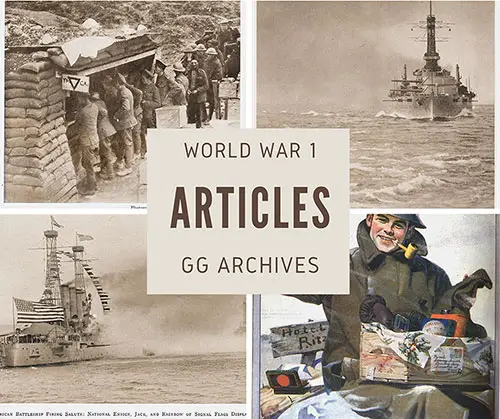
As the 1914–1918 conflict came to be known, the Great War became a world war indeed as it drew in Japan, British colonies in the Pacific, and European colonial holdings throughout Africa, Asia, and North America.
Meanwhile, wary of embroiling itself in the conflict, the United States initially remained neutral. It pursued international trade profits while protecting its interests at home and in the Pacific.
World War I raged around the globe for almost three years before the United States officially entered the fight on 6 April 1917. The fighting ended after the Armistice on 11 November 1918.
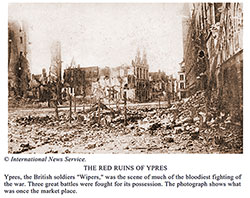
A detailed chronology of the war, month by month, dates the minor and major events of the First World War; in chronological order, important events are briefly described providing a succinct birdseye view of the Great War.
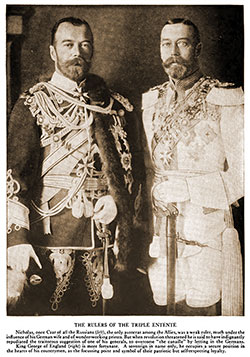
The Campaigns Against Russia 1914-1917
There was also fighting on a vast scale in Eastern Europe between the Central Powers and Russia. The Russians began well with two invasions of East Prussia. Still, the Germans found a Saviour in General Hindenburg, who drove the enemy back into his territories.
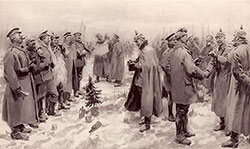
The Christmas truce was a series of widespread unofficial ceasefires along the Western Front of the First World War around Christmas 1914. The truce occurred only five months into the war.
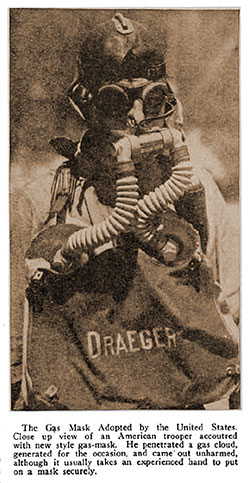
Chemical Warfare - "Gas" In This War
The direct use of poison gases, however, was inhibited explicitly by The Hague Convention. They were used deliberately on part of the Ypres salient for the first time on April 22, 1915.
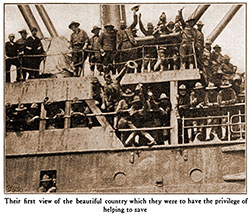
Arrival of American Expeditionary Force Divisions
Descriptions of various American Expeditionary Force Divisions that Arrived in France During 1918: Five divisions arrived in July 1918, Five during August, and another five during September for a total force of 15 divisions.
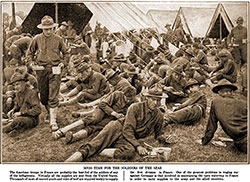
Feeding the Men on the Front Lines During World War I
The troops, having to march many miles a day, would greatly suffer if always compelled to await the arrival of the train carrying food. Therefore troops in the field must carry rations with them, and the ration consumed during the day must be replaced by the train at night.
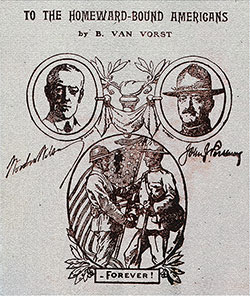
Americans Arrive in Paris - Homeward Bound Americans
So, in June 1917, when General Pershing arrived in Paris with the first contingent of the Expeditionary Forces, there were crowds in the streets and about the station to meet him and to acclaim the American soldiers.
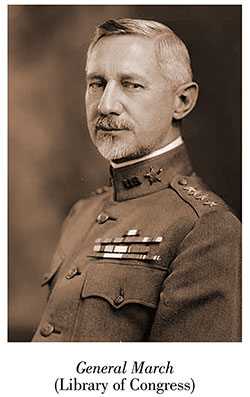
Chronology of WW1 American Operations
General March, American Chief of Staff, appended the following chronology to his annual report to Secretary Baker, made public on December 5, 1918. It is a complete official summary of the chief operations of the United States Army in France.
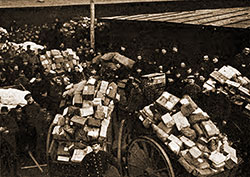
Food Supplies Forwarded to German Prison Camp For Captured American Soldiers
Captured American soldiers arrived in German prison camps, and American Red Cross emergency food parcels were awaiting them if arrangements already in operation were entirely carried out.
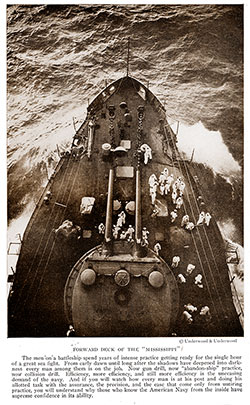
The Gem of the Ocean - Our American Navy
Offensive methods, daring attacks, maneuvering to obtain the advantage, and shooting quickly and hitting the enemy vessel are the essentials of high command afloat.
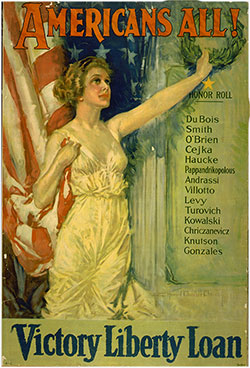
The Immigrant Army: Immigrant Service Members in World War I
Immigrants served in the U.S. military during World War I in various ways, both at home and abroad. Many service members embraced their heritage while they devoted themselves to the defense of the U.S.
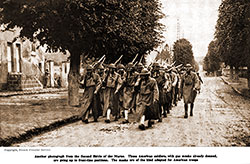
In The Battles of the Great War
With clear foresight, General Pershing insisted on developing a "self-reliant infantry, thoroughly drilled in the use of the rifle and the tactics of open warfare."
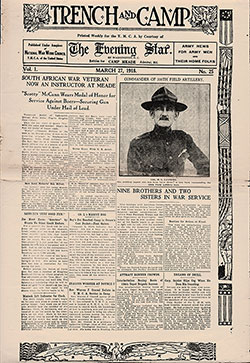
A National War Service Newspaper
During the summer of 1917, it occurred to a number of those interested in the war work of the Y M C A that a national newspaper published primarily for and so far as possible by the service members would meet this need.
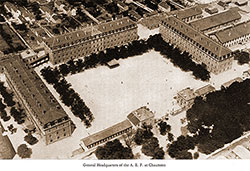
Personnel of the AEF in France
Listing of the United States Armies, Commanders, Divisions, Brigades, Regiments, and Battalions that served in France during the Great War, 1917-1918.
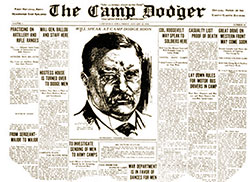
Review of Camp Dodger and The Bayonet Camp Newspapers
The first newspaper in the National Army, The Camp Dodger, the official publication of the Eighty-Eighth Division, U.S.N.A., was published at Camp Dodge. Iowa is a four-page eight-column sheet of vital interests.
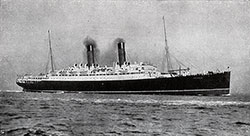
RMS Laconia Torpedoed by German U-Boat
Realizing that we had been torpedoed, my imagination was somewhat disappointed at the slightness of the shock and the meekness of the report. One or two chairs tipped over, a few glasses crashed from table to floor, and instantly, every man in the room was on his feet.
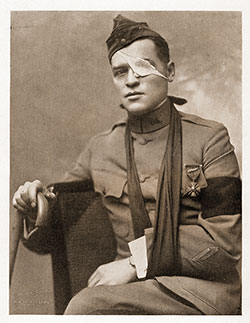
Sinking of the Cunard "Laconia"
The Cunard Line RMS Laconia, launched in 1912, was a beautiful ship that became a fatality of the first world war when she was torpedoed and sunk on 25 February 1917 by the German submarine SM U-50. This article is a first-hand account of Chicago Tribune reporter Floyd Gibbons, who became a war correspondent.
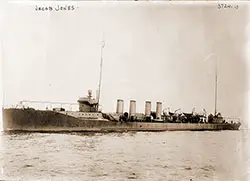
The Sinking of the American Destroyer Jacob Jones
The American destroyer Jacob Jones, one of its class's largest and fleetest vessels, was torpedoed and sunk by a German submarine on December 6, 1917 while on patrol duty in North Atlantic waters.
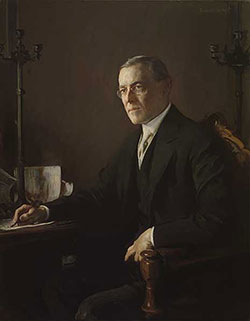
The American People and The Great War
The effect of the war on the United States will depend upon what American citizens say and do. Every man who loves America will act and speak in the true spirit of neutrality, which is the spirit of impartiality and fairness, and friendliness to all concerned.
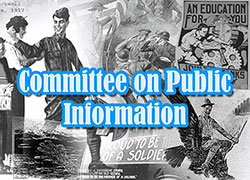
The Committee on Public Information has modified its press regulations. It has issued the following rules that are now presented to the publishers of America to protect our military and naval forces and merchant shipping.
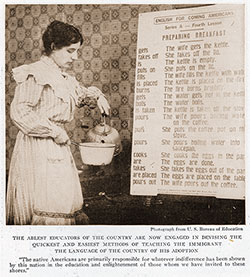
What Does It Mean to Be an American?
What is it to be American? We say that it is to love the Stars and Stripes. But a flag is no more than a symbol. It represents hopes and fears, struggles and achievements. Something is done and yet to be done.
